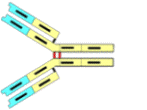Search Cidpusa web
Immune Deficiency due to IgG subclass
If you are suffering from chronic Fatigue, chronic pain, Fibromyalgia, recurrent infections, allergies they you may have IgG or IgG subclass deficiency. If you have IgG subclass deficiency then vaccination can induce autoimmune disease in you.
Certain immunodeficiencies are relatively simple to diagnose, being marked by grossly reduced serum levels of one or more classes of immunoglobulin. Other immunodeficiencies are less obvious and consequently more difficult to diagnose. The challenge is to accomplish the diagnosis and institute the appropriate treatment before permanent damage results.
Immunoglobulin G (IgG) accounts for 70-75% of the total immunoglobulin pool in normal human serum. Unlike other immunoglobulins, IgG is not a single molecule but is composed of four distinct subclasses (IgG1, 2, 3 and 4), each having different functions. There is a wide variety of respiratory problems associated with IgG subclass deficiency, including recurrent otitis media, sinusitis, pneumonia, chronic obstructive airway disease, bronchiectasis and asthma. The way to test them is by getting a IgG subclass screen in your blood.
 IgG 1 is the most abundant of the four subclasses and reaches 'adult' levels in early childhood.
IgG 1 is the most abundant of the four subclasses and reaches 'adult' levels in early childhood.IgG1 provides the largest immune response and the dominant response to protein/polypeptide antigens.
 IgG2 is the most common IgG subclass deficiency and may also be associated with IgA deficiency. Recurrent respiratory infections in
children (Haemophilus influenzae type b, Streptococcus pneumoniae) are particularly associated with IgG2 deficiency. 'Adult' levels of IgG2 are not usually reached until 6-7 years of age.
IgG2 is the most common IgG subclass deficiency and may also be associated with IgA deficiency. Recurrent respiratory infections in
children (Haemophilus influenzae type b, Streptococcus pneumoniae) are particularly associated with IgG2 deficiency. 'Adult' levels of IgG2 are not usually reached until 6-7 years of age.
 IgG3 deficiency can manifest itself in recurrent respiratory infections with obstructive lung disease. It may be seen in association with IgG1
deficiency. Usually patients suffering from Chronic Fatigue Syndrome and Fibromyalgia will have low IgG3 deficiency.
IgG3 deficiency can manifest itself in recurrent respiratory infections with obstructive lung disease. It may be seen in association with IgG1
deficiency. Usually patients suffering from Chronic Fatigue Syndrome and Fibromyalgia will have low IgG3 deficiency.
 IgG4 deficiency may be associated with IgG2 and IgA deficiency in ataxia telangiectasia, frequently masked by normal levels of total IgG. Subclass deficiencies can
also be associated with T-cell dysfunction. Elevated levels of IgG4 are seen in atopic dermatitis, asthma and some
parasitic diseases.
IgG4 deficiency may be associated with IgG2 and IgA deficiency in ataxia telangiectasia, frequently masked by normal levels of total IgG. Subclass deficiencies can
also be associated with T-cell dysfunction. Elevated levels of IgG4 are seen in atopic dermatitis, asthma and some
parasitic diseases.In a recent study of 56 adults with IgA deficiency the authors found the susceptibility respiratory tract infections was not related to the degree of IgA deficiency but was related to the deficiency of IgG4. please continue to IgG1, IgG2, IgG3, IgG4 deficiencies